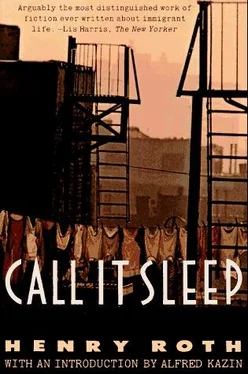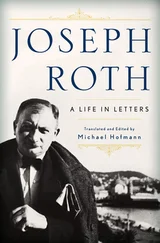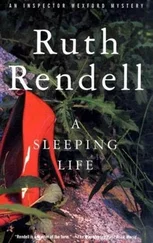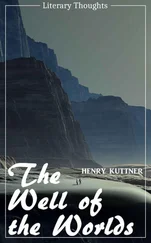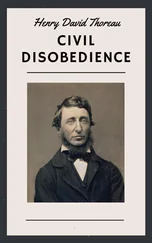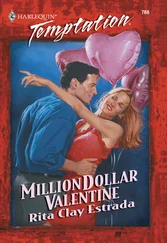The Christian strain in this entire last section is very bold, with numerous references to the New Testament, and primary focus on the betrayal of Christ. The poker players rejoice “T’ree Kings I god. Dey came on huzzbeck!” — and vulgar jokes are cast in biblical terms — “How many times’ll your red cock crow, Pete, befaw y’ gives up? T’ree?” (418). The red cock metaphor condenses the religious and the sexual connotations, and even refers to a historical one, for Emma Lazarus, the Jewish poet whose poem appears on the base of the Statue of Liberty, was the author of a poem entitled “The Crowing of the Red Cock,” which reviews the persecution of the Jew by the Christian through the ages. The satiric treatment of these Christian elements is also evident in the reference to the woman Mary who was with child, but had an abortion. In this climactic chapter, David becomes the paschal lamb, the one only kid in Ḥad gadya, but also a Christ figure, as the Jewish and Christian traditions are conflated. When he is first noticed by the people, a bystander shouts, “Christ, it’s a kid!” (420). When the hospital orderly administers ammonia, a member of the crowd claims that it “stinks like in de shool on Yom Kippur” (431).
David thinks of himself as the kid in the Passover liturgy, and he seeks the God of the Book of Isaiah in the Jewish scriptures. But he is perceived by the crowd of immigrants, by America’s melting pot, as a Christ figure. As he leaves Yiddish behind, the mame-loshn, the language of nurture but not literacy for him, and Hebrew and Aramaic, loshn-koydesh, the “foreign” languages of his liturgy and his spiritual identity, he is left with English, his genuine native language, which is at the same time the language of the “other,” the language of Christianity. At the end, in his semiconscious state, the English language speaks through him, as it does throughout the book, and it kills the kid who is reborn as Christ. To assimilate, for Roth, is to write in English, to become the “other,” and to kill the father. At the time that Roth wrote Call It Sleep, he identified as a Communist and he consciously embraced a vision of assimilation into a larger community beyond that of religion and nationality. In 1963, he made his often quoted and later recanted statement that the best thing that Jews could do would be “orienting themselves toward ceasing to be Jews.”21 In Call It Sleep, Roth’s central protagonist, a Jewish child, is shown to be overly assimilated, to become Christ. This is not what he consciously seeks; it is an imported self-image, an archetype taking root in his consciousness as the English language becomes his sole means of expression. In the climactic linguistic and cultural collage of the last section, David becomes a naturalized American by becoming a Christ symbol, and the English language is experienced as a foreign tongue and a foreign culture inhabiting his psyche. Whether he desires it or not, David is destined to live a life in translation, alienated from the culture of his language. It is no wonder that Roth could write no second book.
Among the few stories and sketches that he did write in later years, now collected in Shifting Landscapes, are two that further demonstrate this dilemma of the Jewish writer in his relation to his languages and culture. In “Final Dwarf” a naive Maine farmer (Roth’s occupation at that time) nearly kills his immigrant New York father, but he cannot bring himself to do so. But more significantly, in “The Surveyor” an American Jewish tourist to Spain is apprehended for attempting to determine, with precision, the exact site of the auto da fé in Seville in order to lay a wreath. When asked by the police about his action, he says, “I was attempting to locate a spot of some sentimental value to myself … A place no longer shown on the maps of Seville.”22
In Call It Sleep, Roth’s fiction conveys the cultural ethos of immigration, of ethnicity, of living at the nexus of several cultures, of being haunted by missing languages, of being intellectually estranged from the mother tongue and emotionally estranged from one’s native language. He did so by various techniques of translation, linguistic and cultural, woven throughout his novel. But to write another novel, he would have had to kill his father and to embrace the Christian world, the one of the Inquisition in Seville, of the rosary innocently cherished by David. This he could not do. Yet he gave his readers a brilliant artistic document of a cultural dead end. Yiddish has the last word in the street chorus, and it is a disembodied and anonymous voice, “Gott sei dank.” It speaks for Roth’s readers.
Hana Wirth-Nesher
Tel Aviv University
NOTES
1. Baal Makhshoves (Israel Isidor Elyashev), “Two Languages — Only One Literature” [Yiddish], in Geklibene verk (New York, 1953), p. 122 (my translation). English version in What Is Jewish Literature? ed. Hana Wirth-Nesher (Philadelphia: Jewish Publication Society, 1992).
2. Ibid., p. 119.
3. Ibid., p. 117.
4. William Mackey, “The Description of Bilingualism,” in Readings in the Sociology of Language, ed. Joshua Fishman (The Hague, 1968), p. 554.
5. Joshua Fishman, Sociolinguistics: A Brief Introduction (Rowley, Mass., 1972), pp. 52–54. Fishman is basing his definitions on the work of Charles Ferguson, “Diglossia,” Word 15 (1959).
6. Leonard Forster, The Poet’s Tongues: Multilingualism in Literature (Cambridge, 1970), p. 4.
7. The hidden and entirely inaccessible language to David is Polish, which appears in the text only as gaps to be filled by the child’s misguided speculations.
8. See Max Weinreich, History of the Yiddish Language (Chicago, 1980); Uriel Weinreich, Languages in Contact: Findings and Problems (New York, 1953); Itamar Even-Zohar, “The Nature and Functionalization of the Language of Literature Under Diglossia” [Hebrew], Hasifrut 2 (1970): 286–302, and “Aspects of the Hebrew-Yiddish Polysystem,” in Polysystem Theory (forthcoming); Benjamin and Barbara Harshav, American Yiddish Poetry (Berkeley, 1986); Dan Miron, A Traveler Disguised: A Study in the Rise of Modern Yiddish Fiction in the Nineteenth Century (New York, 1973).
9. Max Weinreich, p. 249.
10. M. M. Bakhtin, The Dialogic Imagination (Austin, 1981), p. 292.
11. Meir Sternberg, “Polylingualism as Reality and Translation as Mimesis,” Poetics Today 2 (1981): 225–32.
12. Dorrit Cohn, Transparent Minds: Narrative Modes for Presenting Consciousness in Fiction (Princeton, 1978).
For illuminating readings of Call It Sleep see Murray Baumgarten, City Scriptures: Modern Jewish Writing (Cambridge, Mass., 1982); Naomi Diamant, “Linguistic Universes in Henry Roth’s Call It Sleep,” Contemporary Literature 27 (1986): 336–55; Wayne Lesser, “A Narrative’s Revolutionary Energy: The Example of Henry Roth’s Call It Sleep,” Criticism 23 (1981): 155–76.
13. Max Weinreich, “Yiddishkayt and Yiddish: On the Impact of Religion on Language in Ashkenazic Jewry,” in Readings in the Sociology of Language, ed. Joshua Fishman (The Hague, 1968), p. 410.
14. Max Weinreich, History of the Yiddish Language, p. 252.
15. See American Yiddish Poetry, p. 404.
16. Sternberg, p. 225.
17. Henry Roth, Call It Sleep, p. 16. All further page references will be cited in the text.
18. See Hana Wirth-Nesher, “The Modern Jewish Novel and the City: Kafka, Roth, and Oz,” Modern Fiction Studies 24 (1978): 91–110.
Читать дальше
